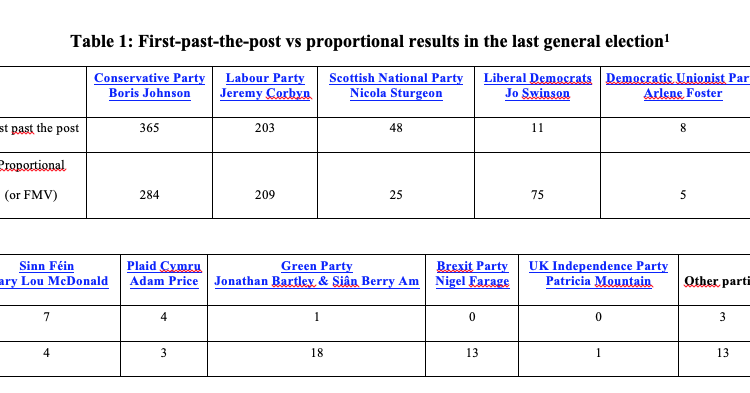
Fair Majority Voting
A different mechanism – fair majority voting FMV – can guarantee proportional representation while maintaining single-member constituencies. Voters vote as they do in the current system: for a candidate of a party in their district. But at the end, every party is apportioned a number of seats according to its country total vote and an elaborate algorithm computes which candidates of each party is elected in each district.
Despite its perceived complexity, it was adopted in several cantons in Switzerland. Following the 2002 Zürich City Parliament election, a citizen filed a suit in the Swiss Federal Court, claiming that the electoral law had violated his constitutional right to an equal vote. In December 2002, the Court ruled that indeed, the electoral law did violate the constitutionally guaranteed proportional representation principle.
The Zürich department of the interior found the bi-proportional apportionment method more to its liking. It is fair majority voting but for multi-member constituencies. This mechanism is used in the canton of Zürich since 2006, Schaffhausen 2008, Aargau 2009, Zug 2014 and Nidwalden 2014. In Zug, the bi-proportional method was adopted by referendum, obtaining 81% of the votes against the status quo; in Nidwalden it was adopted by 57% of the votes in a field of five possibilities. In all cases, the large political parties actively campaigned against it.
FMV has a drawback: the winner of a district is not necessarily its “best” representative because the designated winner may not be the one having the highest first-past-the-post score in the district (and this happens very often, however much is needed to restore proportionality). Swiss voters accepted that drawback, but perhaps UK voters would not.
Majority Judgment
Majority Judgment, a new voting method, avoids vote splitting while maintaining single-member constituencies and guaranteeing that the winner of a district is its best representative. Instead of voting for one candidate, a voter evaluates all the candidates of her district by assigning to each a grade “Excellent, Very good, Good, Poor or Terrible”. Majority Judgment avoids vote splitting because a voter can give her highest grade to several candidates and by its design, it elects in each district the candidate best evaluated by a majority. This method does not guarantee proportional representation, though theoretical and experimental results suggest that majority judgment induces more representation than most known systems (Approval Voting, Range Voting, STV, two-past-the-post, Borda and Condorcet methods).
The first-past-the-post millennium electoral system, a pure invention, is unfair and easily manipulable by candidates and partisan voters. Several modern voting methods have been invented by scientists, and are implemented. Let’s open a debate to get democracy done !
Further reading
M. Balinski (2008). Fair majority voting (or how to eliminate gerrymandering), American Mathematical Monthly 115, 97-113.
M. Balinski and G. Demange (1989). An axiomatic approach to proportionality between matrices,” Mathematics of Operations Research 14, 700-719.
F. Pukelsheim (2013). Proportional Representation: Apportionment Methods and Their Applications. Springer.
M. Balinski and R. Laraki (2011). Majority Judgment: Measuring, Ranking, and Electing, M.I.T. Press